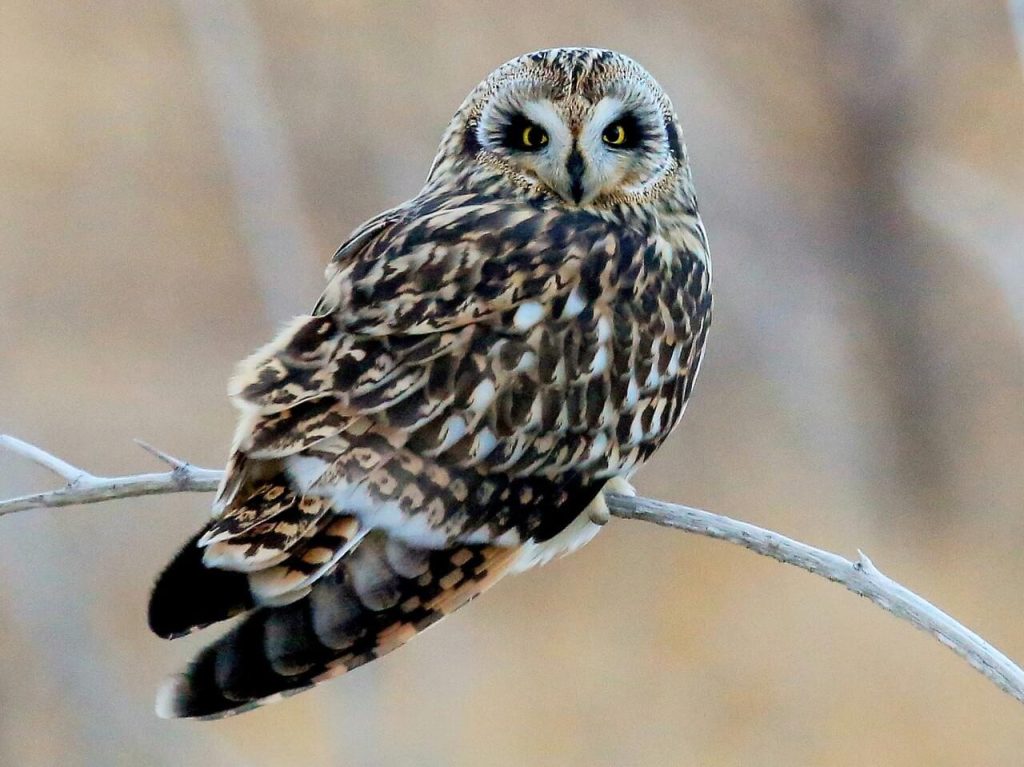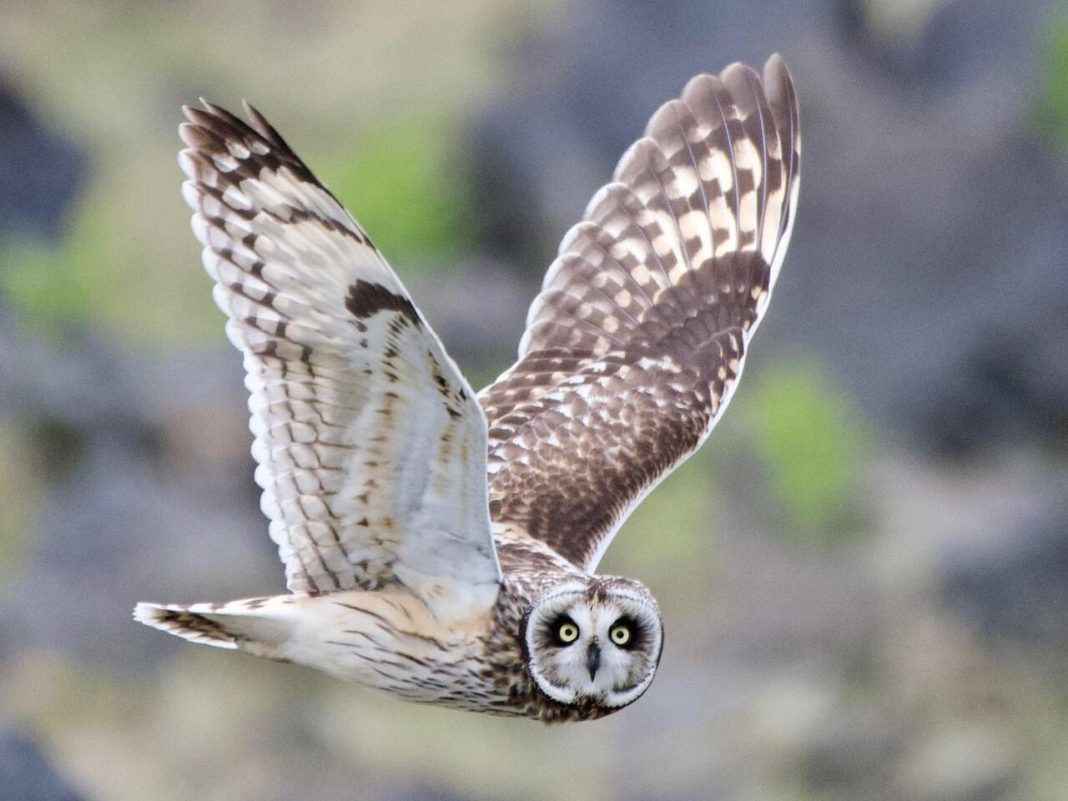By Kirsten Bartlow
Waterfowl dominate a person’s view on any drive through the Delta in winter – blanketing an agricultural field, bobbing in shallow water or traveling high in the sky in formation. But sharp eyes may also spot two other migratory birds taking advantage of Arkansas’s open country.
The northern harrier and the short-eared owl arrive in Arkansas during fall and depart each spring. While one is a hawk and the other an owl, they are sometimes mistaken for one another. Both birds regularly hunt the same areas and fly close to the ground in pursuit of prey. While in their breeding territory in the northern U.S. and Canada, both also nest on the ground.

Distinct even from a distance, northern harriers hunt from the wing and fly stealth missions low over grasslands and fields. With long wings and long tails, males are grayish above with black wingtips while females are brown above and pale below with brown streaking. Both sexes sport a white patch on their rump – an obvious field mark while in flight. Watch for outstretched wings held in a V-shape, similar to a turkey vulture, as they teeter side to side in flight.
An up-close look reveals an owlish face with stiff feathers to funnel sounds to their ears. Unlike other hawks, northern harriers use their sense of hearing along with sight to capture prey, small mammals and birds like cotton rats, house mice, harvest mice, rice rats, shrews, meadowlarks, cardinals, blackbirds and sparrows. They also are capable of taking bigger prey like rabbits and ducks.
Watch for these graceful raptors in eastern Arkansas, along the Arkansas River Valley and bit less regularly in the western Ozarks.

Short-eared owls, unlike most owls in The Natural State, regularly hunt in the middle of the day. And unlike other Arkansas owls, they roost on the ground as well as on fence posts and low brush. They are most common in the open croplands and fields of Arkansas’s Grand Prairie. They’re often spotted along with large flocks of blackbirds that congregate in these areas.
When vole populations erupt in an area, short-eared owls arrive on the scene to dine upon the plump, little rodent. Their dissected owl pellets also often show the bones of grackles, red-winged blackbirds, meadowlarks and starlings.
Look for short-eared owls flying over fields in search of prey. While sometimes confused with the northern harrier, they have a different flight pattern – a bit like a large, tipsy moth. They are slightly smaller than a crow and are a streaked, tawny-brown color. Watch for light spots on their upper wing and dark spots at the bend of the wing on the underside.







